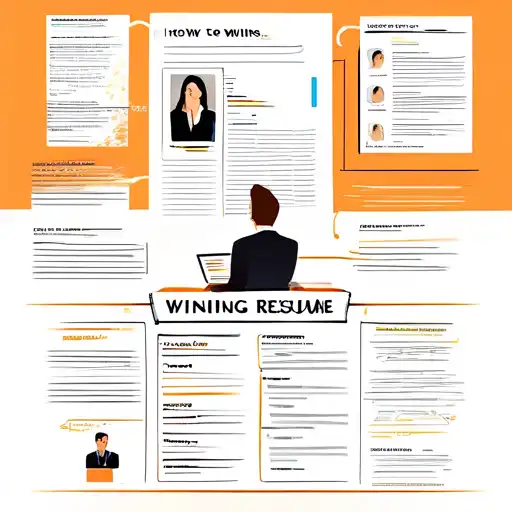Introduction
In today's competitive job market, having a winning resume is more important than ever. It's your first opportunity to make a great impression on potential employers. This guide will walk you through the steps to craft a resume that stands out from the crowd, highlighting your skills, experience, and achievements in the best possible light.
Understanding the Basics of Resume Writing
Before diving into the details, it's essential to understand what makes a resume effective. A well-written resume is concise, tailored to the job you're applying for, and free of errors. It should clearly communicate your value proposition to the employer.
Key Components of a Resume
- Contact Information: Make sure your name, phone number, email, and LinkedIn profile are up-to-date.
- Professional Summary: A brief statement that highlights your experience and skills.
- Work Experience: List your previous jobs, focusing on achievements rather than duties.
- Education: Include your degrees and any relevant certifications.
- Skills: Highlight the skills that are most relevant to the job.
Tailoring Your Resume for the Job
One size does not fit all when it comes to resumes. Tailoring your resume for each job application increases your chances of getting noticed. Use keywords from the job description and focus on the experiences and skills that are most relevant to the position.
How to Use Keywords Effectively
Keywords are terms or phrases that employers use to describe the job and its requirements. Including these keywords in your resume can help it pass through Applicant Tracking Systems (ATS) and catch the eye of hiring managers.
Highlighting Achievements Over Duties
Instead of listing what you were responsible for in previous roles, focus on what you achieved. Use quantifiable results whenever possible to demonstrate your impact.
Examples of Achievement-Oriented Bullet Points
- Increased sales by 20% within the first quarter.
- Reduced operational costs by 15% through process optimization.
- Led a team of 10 to complete a project 2 weeks ahead of schedule.
Design and Formatting Tips
A well-designed resume is easy to read and professional. Stick to a clean layout, use bullet points for clarity, and choose a font that's easy to read. Avoid overly creative designs unless you're applying for a job in a creative field.
Choosing the Right Resume Format
There are three main resume formats: chronological, functional, and combination. Choose the one that best highlights your strengths and is most appropriate for your career stage and the job you're applying for.
Final Checks Before Submission
Before sending your resume, make sure to proofread it for any spelling or grammatical errors. It's also a good idea to have someone else review it. Additionally, ensure that your resume is saved in a format that's widely accepted, such as PDF or Word.
Common Mistakes to Avoid
- Using a generic resume for all applications.
- Including irrelevant personal information.
- Making the resume too long or too short.
Conclusion
Crafting a winning resume takes time and effort, but it's worth it. By following these steps, you can create a resume that effectively showcases your qualifications and helps you stand out in the job market. Remember, your resume is a living document that should evolve as you gain more experience and skills.
For more career advice, check out our guide on how to ace your job interview.
